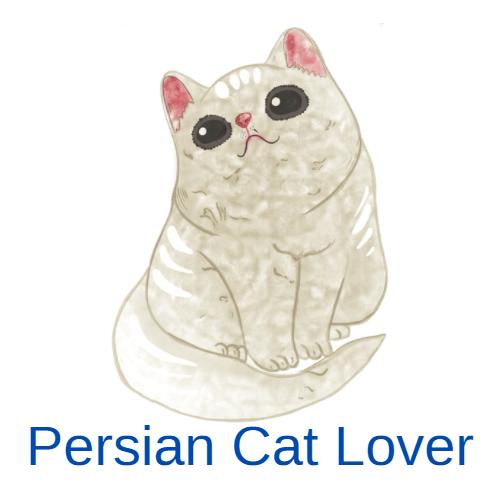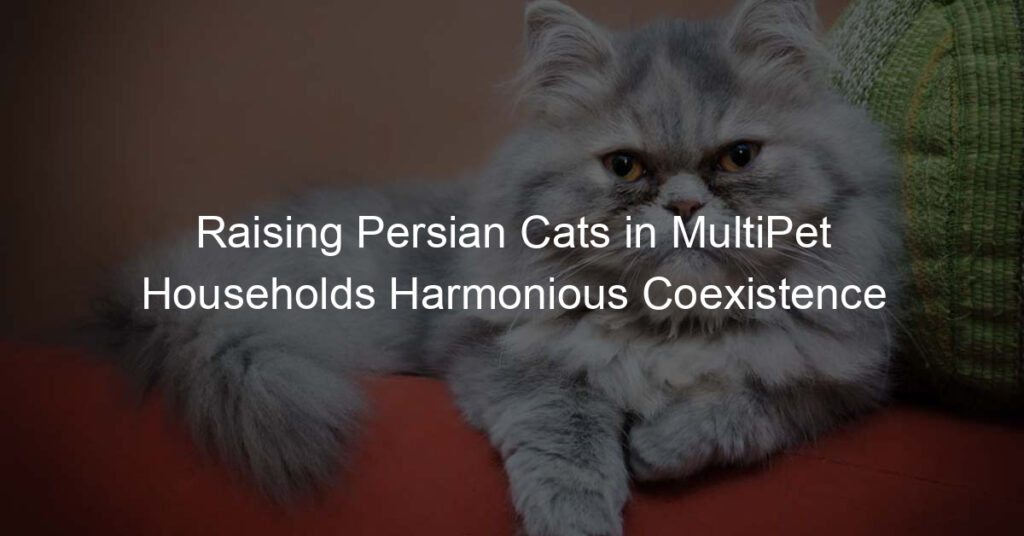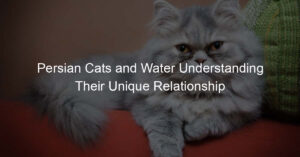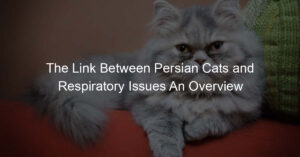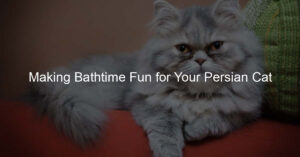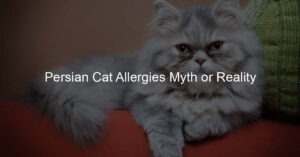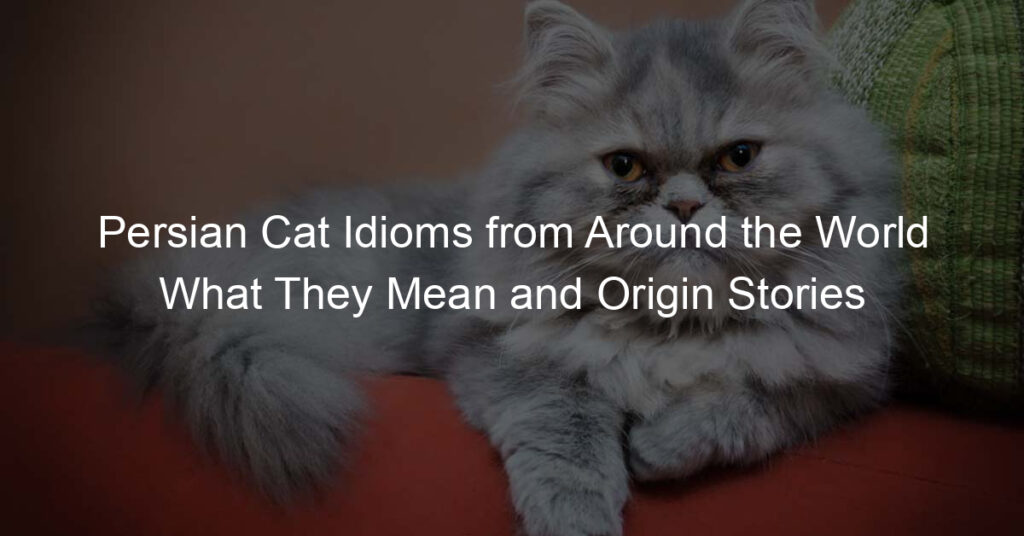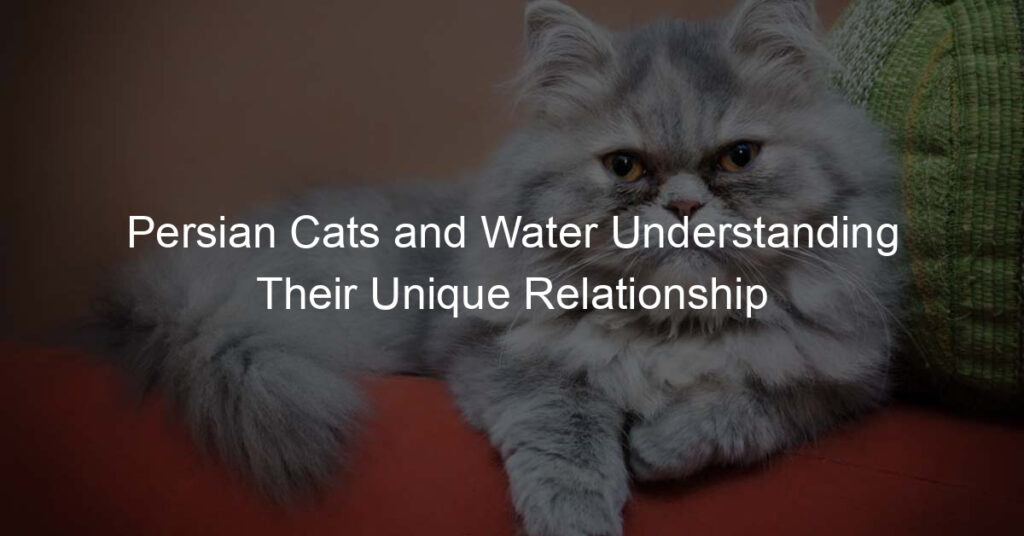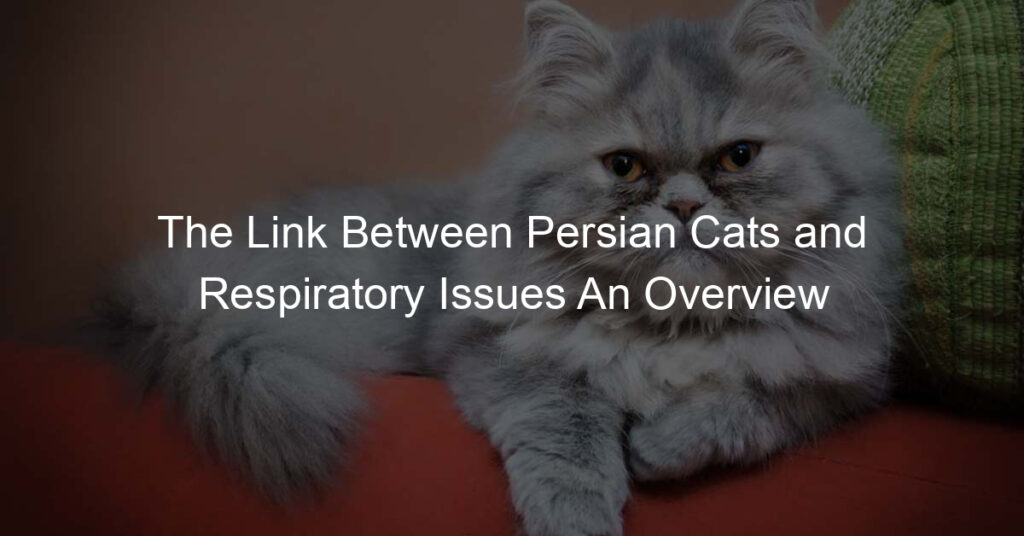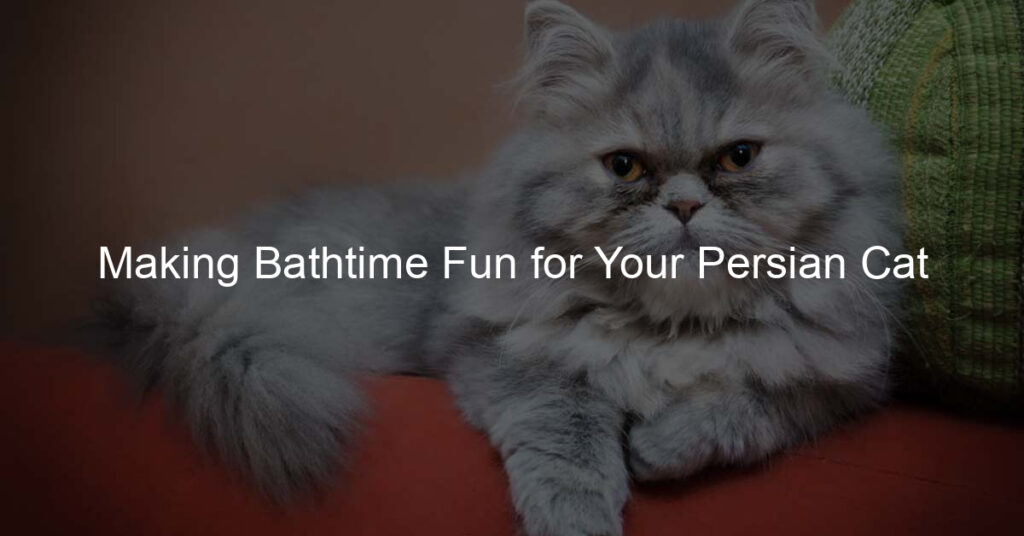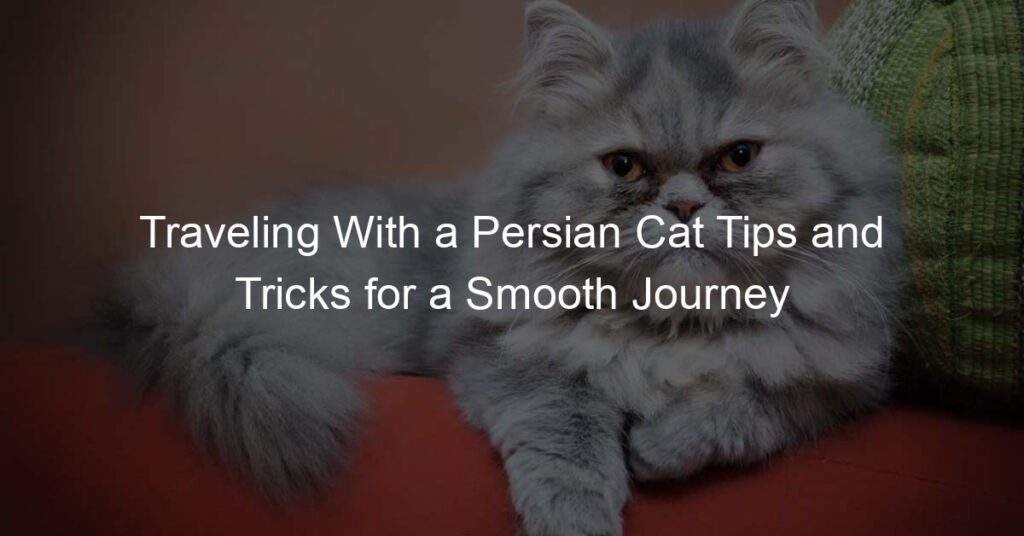Raising Persian cats in multi-pet households can be a rewarding and enriching experience for both the cats and their human companions. Persian cats, known for their luxurious coats and gentle temperament, can bring charm and elegance to any home. In this article, we will explore the benefits of choosing Persian cats as pets in a multi-pet household, understand their nature and personality, and discuss ways to maintain harmony among different pets.
We will also address challenges that may arise in multi-pet households and provide tips for creating an enriching environment that ensures the well-being of all pets. Whether you already have other pets or are considering adding a Persian cat to your household, this guide will help you navigate the complexities of harmonious coexistence between different pets.
Key takeaway:
- Raising Persian Cats in multi-pet households offers charm and companionship: Persian cats can bring joy and beauty to a multi-pet household, enhancing the overall pet experience.
- Understanding the nature and personality of Persian cats is essential: Knowing the unique traits and temperaments of Persian cats helps create a harmonious coexistence with other pets in the household.
- Maintaining harmony in a multi-pet household requires introducing and establishing boundaries: Proper introduction, territorial respect, and structured playtime facilitate peaceful interactions among pets, including Persian cats.
The Charm of Persian Cats in Multi-Pet Households
The charm of Persian cats in multi-pet households is undeniable. Their unique characteristics and affectionate nature make them wonderful companions for other animals. Here are some reasons why Persian cats can bring joy to your multi-pet household:
| Calming presence: Persian cats have a calm and gentle demeanor, which can help create a harmonious atmosphere among the other pets in your household. Their relaxed nature can help reduce tension and conflicts between animals. Beauty and elegance: With their gorgeous long fur and striking features, Persian cats add an element of beauty to any multi-pet household. They are often admired for their regal appearance and can be a source of pride for pet owners. Playful companions: Despite their laid-back nature, Persian cats can also be playful and enjoy interactive playtime with other pets. Their fun-loving attitude can bring joy and entertainment to the entire household. Adaptability: Persian cats are known for their adaptability to different environments and social situations. They can easily adjust to the presence of other animals and form strong bonds with them over time. Companionship: Persian cats are highly affectionate and enjoy the company of their human and animal companions. They can provide warmth and comfort to other pets, enhancing the overall well-being of everyone in the household. |
If you’re considering adding a Persian cat to your multi-pet household, it’s important to consider the personalities and temperaments of your existing pets. Slow introductions and supervised interactions can help foster positive relationships between the animals.
Providing separate spaces and resources for each pet is also crucial for maintaining peace and harmony. With proper care and attention, the charm of Persian cats can truly shine in a multi-pet household.
Why Choose Persian Cats as Pets in a Multi-Pet Household?
Persian cats are the perfect choice for a multi-pet household due to their unique characteristics and adaptability. If you are wondering why choose Persian cats as pets in a multi-pet household, here are a few reasons to consider:
1. Gentle and Calm Nature: Persian cats are renowned for their calm and gentle temperament. Their patient and tolerant nature makes it easier for them to get along with other pets in the household.
2. Low Activity Level: Unlike some other breeds, Persian cats are not overly active. They prefer to spend most of their time relaxing and lounging around. This laid-back nature reduces the likelihood of territorial or dominance-related conflicts with other pets.
3. Independent Personality: Persian cats have an independent streak and can entertain themselves for long periods. They don’t rely heavily on other pets for stimulation or attention, which helps minimize potential conflicts or jealousy.
4. Easy to Groom: Regular grooming is essential to care for Persian cats’ long coats. This grooming routine can also serve as a bonding experience among pets. Other animals can observe and participate in the grooming process, strengthening their relationships.
5. Aesthetically Pleasing: Persian cats are famous for their stunning appearance. With their luxurious coats and expressive faces, they bring an air of elegance and charm to any multi-pet household.
By understanding why choose Persian cats as pets in a multi-pet household, you can foster a harmonious coexistence among all your pets. This will create a loving and nurturing environment for your Persian cat and other animals.
(Word count: 223)
Understanding the Nature and Personality of Persian Cats
Understanding the Nature and Personality of Persian Cats is essential when considering them as pets in a multi-pet household. Persian cats are well known for their calm and gentle temperament, which makes them a perfect fit for living with other pets. They are typically friendly and enjoy the companionship of both humans and other animals. Moreover, Persian cats are not excessively energetic and prefer to relax and enjoy a peaceful environment.
Regarding their nature, Persian cats are usually described as independent yet affectionate. They value their alone time but also appreciate cuddling and being close to their owners. They are not known for being overly vocal and tend to communicate their needs through body language and soft purring.
It is crucial to note that each Persian cat may exhibit its own unique personality traits, similar to any other pet. Some may be more extroverted and social, while others may be more reserved and shy. Therefore, it is essential to invest time in getting to know your Persian cat and understanding its individual preferences and requirements.
To ensure a harmonious coexistence in a multi-pet household, it is important to provide adequate space, resources, and attention for each pet. Persian cats may appreciate having designated areas where they can retreat to when they need some alone time. Additionally, mental stimulation through interactive toys and playtime can help them stay engaged and content.
By understanding the nature and personality of Persian cats, you can create a welcoming environment for them in a multi-pet household. This will result in a harmonious and enjoyable living situation for all the pets involved.
Maintaining Harmony in a Multi-Pet Household
Maintaining harmony in a multi-pet household can be a delicate balance, but with the right approach, it’s possible for pets of different breeds to coexist peacefully.
In this section, we’ll explore how to foster a harmonious environment by introducing Persian cats to other pets, establishing clear boundaries and territories for each furry friend, and promoting positive interactions and playtime among all pets. So, if you’re looking to create a blissful coexistence between your Persian cat and other companions, read on for valuable insights and practical tips.
Introducing Persian Cats to Other Pets
When introducing Persian cats to other pets in a multi-pet household, it is important to take certain steps to ensure a smooth and harmonious transition.
- Slow and gradual introductions: Start by keeping the new cat separated from the other pets in the house for a few days. This allows them to familiarize themselves with each other’s scents and reduces the chances of territorial aggression.
- Exchange scents: Rub a towel or cloth on the new cat and then place it near the other pets, and vice versa. This helps them become accustomed to each other’s scent, making the eventual introduction less stressful.
- Supervised interactions: Introduce the pets to each other in a controlled and supervised environment. This could be done by using baby gates or crates to create a physical barrier while allowing visual and olfactory contact.
- Positive reinforcement: Reward good behavior and positive interactions between the pets with treats and praise. This helps create positive associations and reinforces desirable behavior.
- Separate resources: Provide separate food bowls, litter boxes, and resting areas for each pet. This helps reduce potential conflicts over shared resources and establishes individual territories.
By following these steps and being patient, you can gradually introduce Persian Cats to Other Pets in a multi-pet household and foster a harmonious coexistence.
Establishing Boundaries and Territory for Each Pet
- Allocate separate spaces for each pet within the house where they can retreat to and feel safe. This helps prevent conflicts and allows each pet to have their own territory.
- Use baby gates or barriers: Use physical barriers like baby gates or pet barriers to create boundaries between different areas of the house and establish territory for each pet. This can help control the interaction between pets and allow them to have their own space.
- Provide individual feeding areas: Establishing Boundaries and Territory for Each Pet, ensure that each pet has their own feeding station to avoid competition and potential aggression during meal times. This can be achieved by feeding pets in separate rooms or using feeding bowls that are spaced out.
- Establish litterbox areas: To establish boundaries and territory for each cat, they should have their own separate litterbox in different locations to prevent sharing and territorial disputes. It is recommended to have one more litterbox than the number of cats in the household.
- Give each pet their own toys and resources: Establishing Boundaries and Territory for Each Pet, ensure that each pet has a variety of toys, scratching posts, beds, and other resources that they don’t have to share. This helps prevent conflicts and gives each pet a sense of ownership and territory.
Pro-tip: Gradually introduce the concept of boundaries and territory to your pets by starting with short interactions and gradually increasing their time together. This will allow them to become familiar with each other’s presence and establish their own spaces in a harmonious manner.
Creating a fur-nomenal playtime environment where the purrsuasion tactics of Persian cats can charm even the grumpiest of pets.
Promoting Positive Interactions and Playtime Among Pets
Promoting positive interactions and playtime among pets is crucial for maintaining a harmonious multi-pet household. It is essential to foster bonds, reduce conflicts, and ensure the overall well-being of all pets involved.
Here are some effective strategies to promote positive interactions and playtime among pets:
- Introduce pets gradually: When introducing a new pet to the household, it is important to do it in a gradual manner. Allow pets to sniff each other through a door or a gate, gradually increasing their interaction time. This approach helps them become familiar with each other’s scent and reduces the chances of aggression.
- Provide separate spaces: Each pet should have their own safe space where they can retreat when needed. This can be a separate room or a designated area with their bed, toys, and food. Having their own space helps pets feel secure and reduces potential conflicts.
- Supervised playtime: Encourage supervised playtime between pets. Use interactive toys or engage in activities that promote positive interactions, such as chasing a toy or playing with a feather wand. Monitor their interactions closely to ensure they are enjoying the play without any signs of aggression.
- Reward positive behavior: Whenever pets interact positively or play together without any issues, reward them with treats or praise. This reinforces their good behavior and encourages them to continue engaging in positive interactions.
- Age-appropriate play: Consider the age and energy levels of your pets when planning playtime. Younger, more energetic pets may need more active play, while older or less active pets may prefer gentle interactions. Tailor the playtime activities to suit the individual needs of each pet.
By promoting positive interactions and playtime among pets, you can create a harmonious environment where all pets can coexist peacefully and happily.
One pet owner, Sarah, had a multi-pet household consisting of a Persian cat, a Labrador Retriever, and a parrot. Sarah diligently followed the strategies mentioned above to promote positive interactions and playtime among her pets. She gradually introduced them, allowed supervised playtime, and provided separate spaces. Over time, the pets developed a strong bond and enjoyed playing together, chasing toys, and even grooming each other. Sarah’s consistent efforts in promoting positive interactions and playtime among her pets resulted in a harmonious and joyful multi-pet household.
From allergies to aggression, here’s how to tame the wild beast within any multi-pet household.
Overcoming Challenges in Multi-Pet Households
In the fascinating world of raising Persian cats in multi-pet households, we come across certain challenges that demand our attention.
Join me on this journey as we explore ways to overcome these hurdles. We’ll unravel the secrets to dealing with potential allergies or health concerns, addressing behavioral issues or aggression, and managing feeding and litterbox arrangements. Together, we’ll pave the way for a harmonious coexistence among our furry friends.
Dealing with Potential Allergies or Health Concerns
When it comes to dealing with potential allergies or health concerns when raising Persian cats in multi-pet households, it is important to address these issues proactively. Here are some considerations to keep in mind:
1. Regular grooming: Persian cats have long, luxurious coats that require frequent grooming. This not only keeps their fur healthy and free of allergens but also reduces the risk of allergies for pet owners. It is essential to brush their coats regularly to prevent matting and periodically bathe them to maintain clean skin and fur.
2. Maintaining a clean environment: Ensuring a clean living area and litter box is crucial to prevent the accumulation of allergens and bacteria. Regular cleaning helps reduce the risk of allergies or health issues for both Persian cats and other pets in the household.
3. Monitoring for respiratory issues: Due to their flat faces, Persian cats are prone to respiratory issues, including allergies. It is important to remain vigilant for symptoms like sneezing, coughing, and difficulty breathing. If any issues arise, consulting a veterinarian for appropriate treatment is essential.
4. Balanced nutrition: Providing a well-balanced diet with high-quality ingredients is vital for the overall health of Persian cats. This ensures they receive the necessary vitamins and minerals, strengthening their immune system and reducing the risk of allergies or other health concerns.
5. Regular veterinary check-ups: Scheduling regular check-ups with a veterinarian is necessary to monitor the health of your Persian cat and address any potential allergies or health concerns. They can offer guidance on preventive measures and recommend suitable treatments if needed.
By being proactive in dealing with potential allergies or health concerns, you can create a harmonious and healthy environment for your Persian cat and other pets in the multi-pet household.
Help your pets address their issues before they address each other, it’s like pet therapy but with less couches and more fur.
Addressing Behavioral Issues or Aggression
Incorporating keywords in a Multi-Pet Household can be a challenge, but with proper understanding and techniques, Addressing Behavioral Issues or Aggression can be managed effectively.
1. Establish clear rules and boundaries for all pets in the household. Consistency is key in training and maintaining discipline. Reinforce positive behaviors through rewards and praise.
2. Identify the triggers for aggression or behavioral issues and work towards desensitizing the pets. Gradually expose them to the triggers in a controlled and positive environment to help them overcome their fears or anxieties.
3. Provide each pet with their own space and resources. This includes separate feeding areas, litter boxes, and resting places. This ensures that each pet feels secure and has their own personal space.
4. Engage in regular exercise and playtime with all pets. Physical and mental stimulation can help reduce aggression and redirect their energy towards positive outlets. Interactive toys and puzzles can also keep them entertained.
5. Seek professional help if needed. If the Addressing Behavioral Issues or Aggression persists despite your efforts, consult a veterinarian or animal behaviorist. They can provide expert advice and guidance tailored to your specific situation.
Pro-tip: Patience and consistency are vital when Addressing Behavioral Issues or Aggression in a multi-pet household. Understanding each pet’s individual needs and providing a harmonious environment will contribute to a peaceful coexistence.
Maintaining peace at mealtime and potty breaks: navigating the delicate art of feeding and litterboxes in a multi-pet Persian paradise.
Managing Feeding and Litterbox Arrangements
Managing feeding and litterbox arrangements is crucial in maintaining a harmonious coexistence among pets in a multi-pet household. Here are some strategies for effectively managing feeding and litterbox arrangements:
- Create separate feeding stations for each pet: Dedicate specific areas for each pet to eat their meals. This helps prevent competition or aggression during feeding times while ensuring that each pet has their own food and water bowls.
- Establish a feeding schedule: Consistently feeding pets at the same time every day helps create a sense of routine and minimizes conflicts. It also aids in managing their bathroom habits.
- Provide separate litterboxes for each cat: To accommodate their cleanliness, it’s crucial to provide Persian cats with clean, individual litterboxes. These litterboxes should be placed in different locations to ensure privacy and prevent territorial disputes.
- Regularly clean the litterboxes: Given their meticulous nature, it is important to scoop the litterboxes daily and thoroughly clean them on a regular basis. This promotes good hygiene and reduces any potential odor or mess.
- Consider litter choices: Experiment with different types of litter to cater to the preferences of Persian cats, who typically prefer fine-grained clumping litter. Maintaining consistent litter choices can help avoid any aversions or accidents.
- Monitor feeding portions: To prevent health issues caused by overeating, closely monitor the feeding portions of each pet. Consult with a veterinarian to determine the appropriate amount of food for your Persian cat based on their age, size, and activity level.
- Observe and address any feeding or litterbox issues: Pay close attention to your pets’ behavior during feeding and litterbox time. If conflicts arise or there are changes in their eating or elimination habits, address the issues promptly. Seek advice from a veterinarian if necessary.
- Ensure access to fresh water: To encourage hydration, provide clean and fresh water for all pets at all times. Consider using pet water fountains.
By following these strategies, you can effectively manage feeding and litterbox arrangements in a multi-pet household, creating a harmonious environment for your Persian cats and other pets. Make your home a playground for pets with these tips for a fur-tastic and harmonious coexistence.
Creating an Enriching Environment for All Pets
When it comes to raising Persian cats in multi-pet households, creating an enriching environment is key to ensuring harmonious coexistence. In this section, we’ll explore how to achieve just that. From providing individual space and resources to offering mental stimulation and play opportunities for all pets, we’ll cover the essentials for a safe and comfortable living environment. So, let’s dive in and discover how to create a haven where every furry friend can thrive together!
Providing Individual Space and Resources
When raising Persian cats in a multi-pet household, it is crucial to address their needs for providing individual space and resources to ensure harmony among all the pets.
- It is essential to create separate sleeping areas for each pet, including cozy beds and blankets, so that they have their own personal space to feel secure and comfortable.
- To prevent competition and stress, it is highly recommended to have multiple litterboxes available, ideally one per cat plus an extra one. These litterboxes should be placed in different areas of the house, allowing each cat to have their designated spot for their needs.
- Multiple scratching posts or cat trees should be installed to provide each cat with their own designated space for claw maintenance and stretching.
- For a peaceful mealtime and to prevent food guarding, individual feeding stations should be provided for each pet. This includes separate food bowls and water dishes for each cat.
- It is beneficial to offer individual hiding spots or safe retreat areas for each cat, such as cat condos or shelves, where they can relax and feel secure.
- To avoid conflicts and promote individual playtime, it is essential to ensure that each pet has their own toys and play equipment.
- Assigning separate grooming areas to each cat, including different brushes, combs, and grooming supplies, can help prevent territorial disputes.
- Consider using baby gates or pet gates to create physical boundaries between the different areas of the house. This allows each pet to have their own space and minimizes unwanted interactions.
Offering Mental Stimulation and Play Opportunities
When it comes to raising Persian cats in a multi-pet household, offering mental stimulation and play opportunities is essential for their well-being and happiness.
| Engage your Persian cat’s mind with interactive toys such as puzzle feeders or treat-dispensing toys. These toys require your cat to think and problem-solve, providing mental stimulation during playtime. Persian cats love to climb and explore high places. Install cat shelves or provide tall cat trees to offer them vertical spaces to jump and play. This not only provides physical exercise but also mental stimulation as they navigate different levels and heights. To keep your Persian cat engaged, regularly rotate their toys. Introduce new toys to prevent boredom and maintain their interest. This will stimulate their curiosity and encourage playfulness. Engage in interactive play sessions with your Persian cat using toys such as feather wands or laser pointers. These games help fulfill their hunting instincts and provide mental stimulation as they chase and pounce on the moving toys. Persian cats need an outlet to scratch, so providing scratching posts or boards is essential. Scratching not only helps them maintain healthy claws but also offers mental stimulation and a way to mark territory. Some Persian cats enjoy the effects of catnip, which can provide mental stimulation and playfulness. Offering cat grass can provide an outlet for their chewing instincts and contribute to their overall mental well-being. |
By offering mental stimulation and play opportunities, you can ensure that your Persian cat remains active, happy, and mentally stimulated in a multi-pet household.
Cats have been domesticated pets for thousands of years and have thrived in various environments. Throughout history, humans have recognized the importance of mental stimulation and play for cats’ physical and mental well-being. Ancient Egyptians, for example, worshipped cats and believed that by engaging in play, cats would combat evil spirits and bring good fortune to their households.
In modern times, research has shown that offering mental stimulation and play opportunities is crucial for a cat’s overall health and happiness. As cat owners, we have the responsibility to provide our feline companions with an enriching environment that caters to their natural instincts and provides them with the necessary mental stimulation they need to thrive.
Ensuring a Safe and Comfortable Living Environment
Ensuring a safe and comfortable living environment for all pets in a multi-pet household is vital for maintaining harmony and promoting their well-being.
- Secure the living area: To ensure a safe and comfortable living environment, it is important to keep all doors, windows, and gates properly closed and locked. Additionally, you can install screens or mesh barriers to prevent pets from escaping or intruders from entering.
- Provide separate resting spaces: Each pet should have their own designated resting area to retreat and enjoy privacy whenever needed. This could be a separate room, a specific corner, or individual beds for each pet.
- Safety-proof the environment: It is crucial to remove any hazardous items such as toxic plants, electrical cords, small objects, or chemicals that may pose a risk to your pets. Secure loose cords and heavy furniture to prevent accidents or injuries.
- Ensure cleanliness and hygiene: Regularly clean and disinfect common areas, including feeding areas and litter boxes, to maintain cleanliness and prevent the spread of diseases. It is also important to provide fresh water and ensure that each pet has access to their own clean food bowls.
- Avoid overcrowding: It is essential to avoid overpopulating the living environment with too many pets as this can lead to stress, territorial disputes, and aggression. When introducing new pets to the household, consider their size and compatibility with the existing pets.
- Monitor interactions: It is important to supervise interactions between pets to prevent any aggressive behavior or conflicts. Provide positive reinforcement and rewards for good behavior, and intervene if necessary to ensure the safety of everyone involved.
- Manage noise and stress: Creating a calm and quiet environment is crucial. Minimize loud noises such as vacuum cleaners, loud music, or yelling. Additionally, provide hiding places or designated safe spaces for pets to retreat to during stressful situations.
Raising Persian Cats in Multi-Pet Households: Harmonious Coexistence
- ✅ Persian cats are known for their gentle and calm nature.
- ✅ Persian cats can coexist with other cats in multi-cat households.
- ✅ When introducing a new cat, it is important to go slow and encourage play and interaction.
- ✅ Persian cats prefer calm and relaxed settings when it comes to dogs.
- ✅ Proper socialization and training are crucial for harmonious coexistence between Persian cats and other pets.
Frequently Asked Questions
Can Persian cats coexist with other pets in multi-pet households?
Yes, Persian cats can coexist with other pets in multi-pet households, such as dogs and other cats. However, careful planning and a gradual approach are necessary to ensure a smooth transition and promote harmonious relationships.
What are the physical characteristics of Persian cats that make them a popular choice for multi-pet households?
Persian cats are known for their luxurious long coat, striking looks, and unique appearance, including expressive eyes and a brachycephalic head structure. Their regal nature and serene demeanor make them charming pet for households with other pets.
How can I prepare my Persian cat and existing pets for introductions?
Before introducing a Persian cat to other pets, it is important to assess their personalities and understand their needs. Create a safe and comfortable environment, and provide each pet with separate areas initially to help them adjust. Gradual introductions and supervised conditions are key for a successful integration.
How can I ensure a smooth introduction process between my Persian cat and other pets?
During the introduction process, use controlled interactions with the use of baby gates or crates to initially separate the pets. Provide positive reinforcement through treats, praise, and gentle petting during these interactions. Gradually increase the duration and frequency of their interactions as they become more comfortable with each other.
Can Persian cats get along with hyperactive dogs?
Persian cats generally prefer calm and relaxed settings, and hyperactive dogs can cause them severe anxiety. It is important to monitor their anxiety levels and limit their time together if a dog displays hyperactive behavior. Calm and friendly dogs are more likely to coexist well with Persian cats.
What should I do if there are conflicts between my Persian cat and other pets?
If conflicts arise between your Persian cat and other pets, it is important to intervene calmly. Manage playtime and socialization between the pets, using interactive toys to encourage shared play and cooperation. Additionally, provide positive reinforcement, such as treats and affection, to reward calm and friendly interactions.
